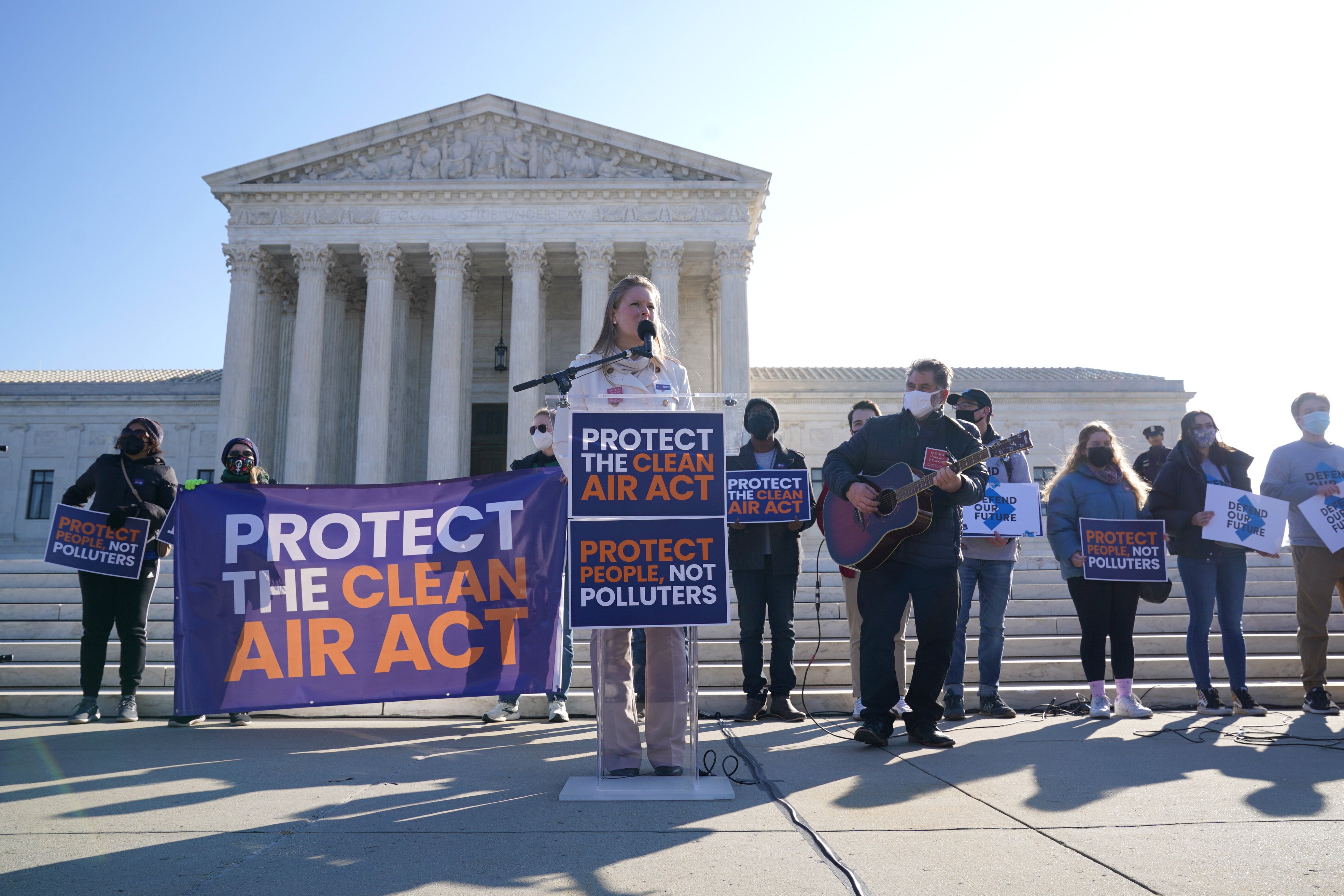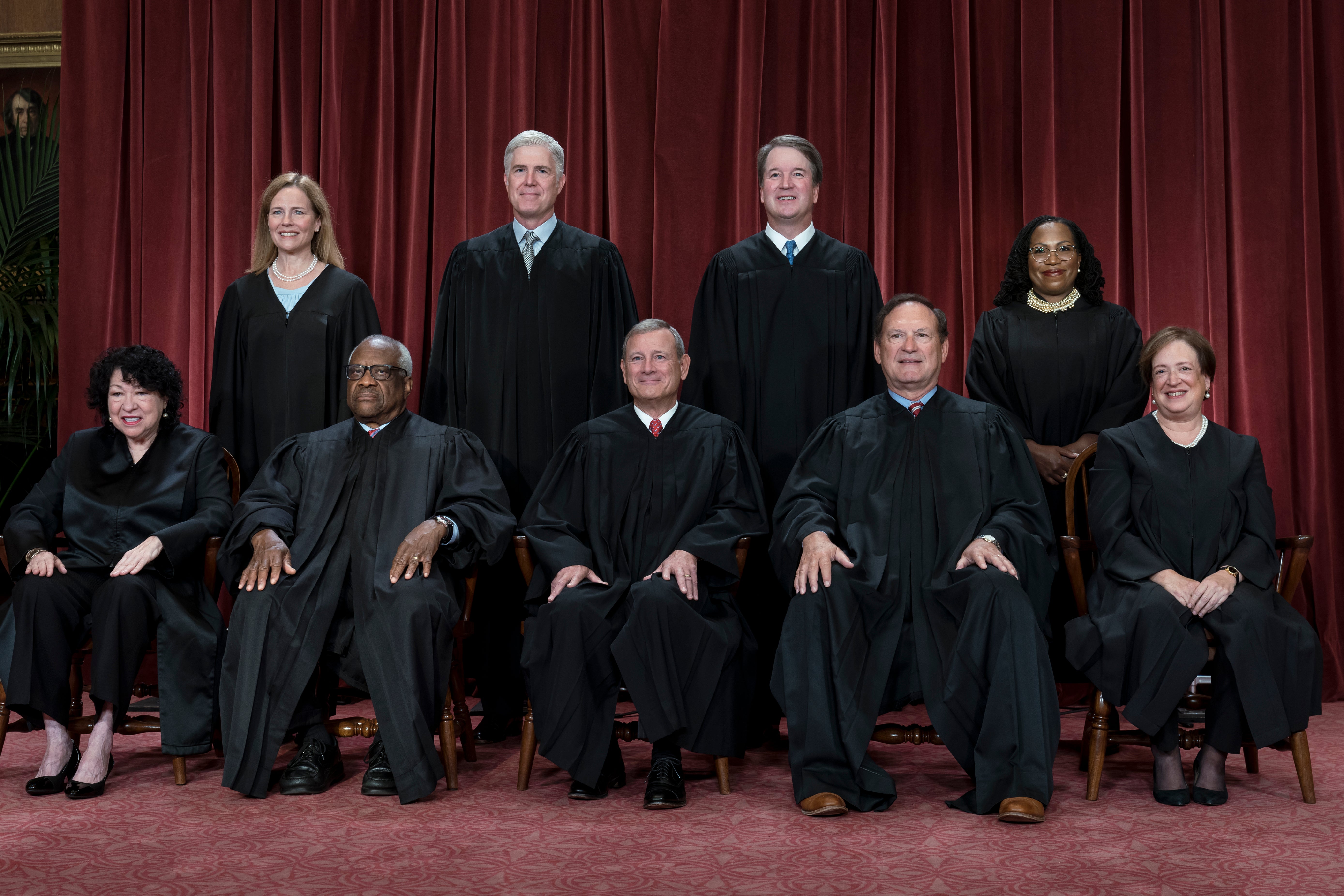Breaking ranks: Justice Amy Coney Barrett defies Supreme Court conservatives to back environmental protections
Justice Barrett, a Trump appointee, split from her conservative colleagues in recent decisions

Supreme Court Justice Amy Coney Barrett split from her conservative colleagues on a Thusday ruling against the Environmental Protection Agency, in a move that is becoming increasingly more common for the Donald Trump appointee.
Barrett joined liberal justices Sonia Sotomayor, Elena Kagan and Ketanji Brown Jackson in dissenting from the conservative majority’s decision to block an environmental rule that aimed to reduce air pollution across states.
She wrote in the dissenting opinion the court’s injunction on a provision of the Clean Air Act would allow upwind states to “significantly” contribute to ozone problems in downwind states for the next several years.
The clause, called the “Good Neighbor Provision” required certain states to curtail their atmospheric emissions that drift into downwind states.
But Justice Barrett also criticized her colleagues for taking too long to decide the case, which was brought to the court on their emergency docket in December – that docket is typically reserved for cases that require quick decisions.

“Our emergency docket requires us to evaluate quickly the merits of applications without the benefit of full briefing and reasoned lower court opinions… Given those limitations, we should proceed all the more cautiously in cases like this one with voluminous, technical records and thorny legal questions,” Barrett wrote.
The court’s 5-4 split may come across as a surprise since the conservative justices generally seem to align with one another. But Barrett has emerged as an outspoken voice among the conservative appointees in recent decisions.
In a case about trademark law that was unanimously decided, the liberal wing of the court joined Barrett’s concurring opinion where she complained that her conservative colleagues went too far in applying history to the decision.
“What is the theoretical justification for using tradition that way?” she wrote.
In March, Barrett delivered a shocking concurring opinion in Trump’s 14th Amendment case, calling out her conservative colleagues for heightening tensions by refusing to join the liberal justices in one final decision.

In that case, all nine justices came to the same conclusion but used different reasoning.
“The majority’s choice of a different path leaves the remaining Justices with a choice of how to respond,” Justice Barrett wrote. “The Court has settled a politically charged issue in the volatile season of a Presidential election. Particularly in this circumstance, writings on the Court should turn the national temperature down, not up.”
In her first term on the court, Justice Barrett sided with her conservative colleagues 91 percent of the time, according to data compiled by SCOTUSBlog.
Last year, Barrett averaged 82 percent in siding with the conservative majority.
Though the Supreme Court is not done issuing opinions this term, Barrett has emerged as an obvious deviation from the traditional conservatives on the court such as justices Clarence Thomas and Samuel Alito.
Subscribe to Independent Premium to bookmark this article
Want to bookmark your favourite articles and stories to read or reference later? Start your Independent Premium subscription today.

Join our commenting forum
Join thought-provoking conversations, follow other Independent readers and see their replies
Comments